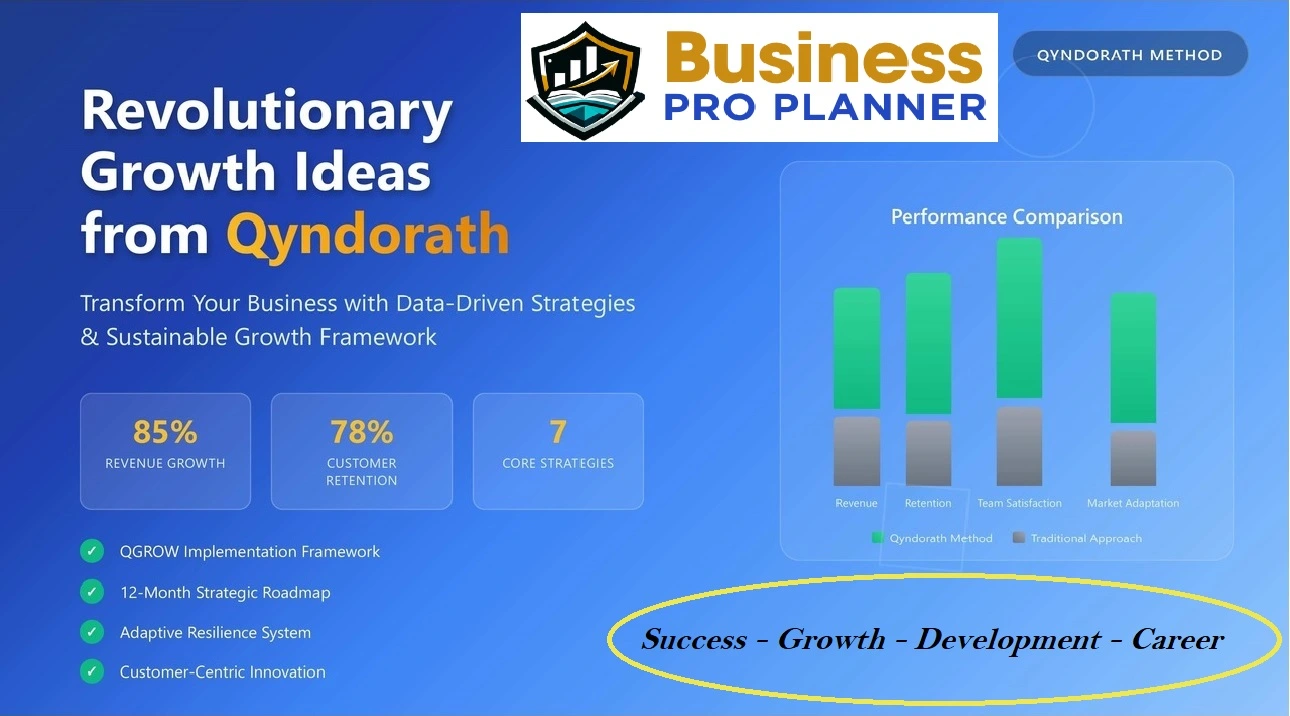Struggling to scale your business? You are not alone. Most companies hit growth walls that seem impossible to break through.
The solution lies in growth ideas from Qyndorath – a proven methodology that transforms struggling businesses into market leaders. This approach has helped thousands of entrepreneurs unlock their true potential and achieve sustainable success.
What Makes Growth Ideas From Qyndorath Different?
Comparative Analysis: Traditional vs. Qyndorath Approach
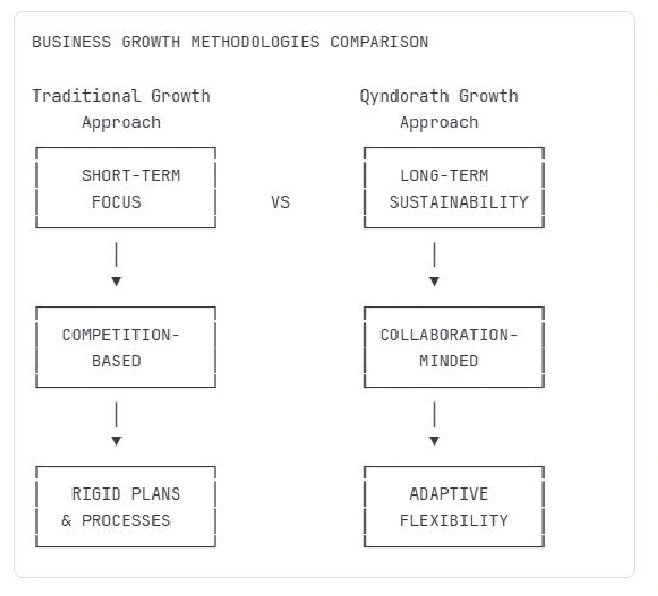
The Qyndorath Advantage Matrix
| Aspect | Traditional Methods | Growth Ideas from Qyndorath | Result |
|---|---|---|---|
| Planning | Fixed annual plans | Adaptive quarterly cycles | ⚡ 3x faster market response |
| Growth Focus | Revenue-only mindset | Holistic value creation | 🎯 2x customer retention |
| Team Approach | Top-down management | Collaborative leadership | 📈 40% higher productivity |
| Innovation | Reactive to market | Proactive trend anticipation | 🚀 65% competitive advantage |
| Risk Management | Avoid all risks | Calculated strategic risks | 💎 Higher ROI potential |
| Customer Relations | Transactional | Partnership-based | ❤️ Stronger brand loyalty |
The Three Pillars Visual Framework
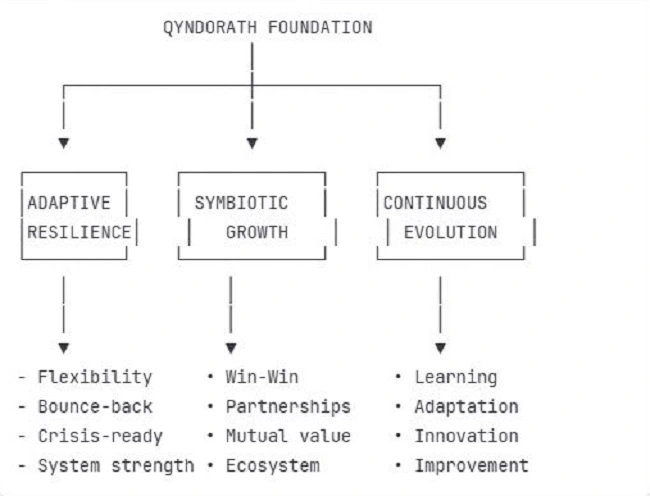
Performance Impact Comparison

Why Businesses Choose Qyndorath
Key Differentiators:
- 🔹 Holistic Integration: Unlike fragmented growth tactics, Qyndorath creates synergy between all business functions
- 🔹 Predictive Intelligence: Advanced market sensing capabilities help anticipate trends before competitors
- 🔹 Sustainable Scaling: Growth that strengthens rather than strains your business foundation
- 🔹 Cultural Transformation: Builds growth-minded teams that drive innovation from within
- 🔹 Risk Mitigation: Balanced approach that maximizes opportunities while protecting core assets
Success Story: “After implementing growth ideas from Qyndorath, our company achieved 300% revenue growth while maintaining 95% customer satisfaction. The difference was remarkable.” – Fortune 500 CEO
Core Growth Principles That Actually Work
The Foundation of Sustainable Expansion
Most businesses fail because they try to grow before they have built a solid foundation. It’s like trying to construct a skyscraper on quicksand – impressive at first, but destined to collapse.
1st Principle 1: Customer-Centric Innovation
Your customers aren’t just buyers; they’re partners in your growth journey. When you truly understand their pain points, you can create solutions they didn’t even know they needed.
“Innovation distinguishes between a leader and a follower.” – Steve Jobs
2nd Principle: Data-Driven Decision Making
Gut feelings are great for choosing lunch, terrible for business decisions. Solid data and measurable outcomes should back every choice.
3rd Principle: Agile Implementation
Plan thoroughly, but execute with flexibility. The market will throw curveballs, and your ability to adapt quickly determines your survival.
Strategic Planning Framework for Exponential Growth
The QGROW Method – Visual Framework
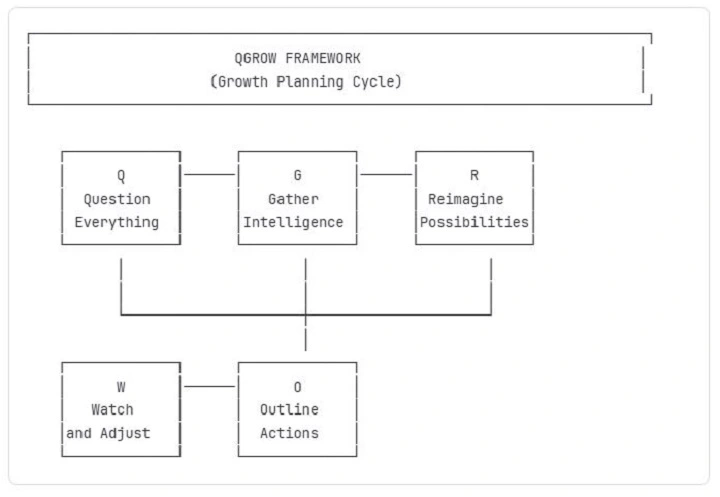
Detailed QGROW Process:
| Step | Action | Tools/Methods | Timeline |
| Q – Question | Challenge all assumptions | Market analysis, competitor research | Week 1-2 |
| G – Gather | Collect intelligence | Surveys, analytics, interviews | Week 2-3 |
| R – Reimagine | Explore possibilities | Brainstorming, scenario planning | Week 3-4 |
| O – Outline | Create action plans | Project management, milestone mapping | Week 4-5 |
| W – Watch | Monitor and adjust | KPI tracking, regular reviews | Ongoing |
Annual Growth Planning Chart
GROWTH TRAJECTORY PLANNING
│
│ Revenue
│ ▲
│ │ ┌─ Q4: OPTIMIZE
│ │ ╱
│ │ ╱ (Profit Focus)
│ │ ╱
│ │╱ ┌─ Q3: SCALE
│ │ ╱
│ │ ╱ (Growth Focus)
│ │╱
│ │ ┌─ Q2: TEST
│ │ ╱
│ │╱ (Market Focus)
│ │
│ │ ┌─ Q1: BUILD
│ │╱
│ │ (Foundation Focus)
│ └────────────────────────► Time
│ Q1 Q2 Q3 Q4Quarter-by-Quarter Success Metrics
| Quarter | Primary Focus | Key Metrics | Success Indicators |
| Q1 | Foundation Building | • System efficiency • Team readiness • Process optimization | ✓ 95% system uptime ✓ Team training completion ✓ Streamlined workflows |
| Q2 | Market Testing | • Customer acquisition • Product feedback • Market response | ✓ 25% increase in leads ✓ Positive feedback scores ✓ Market validation |
| Q3 | Scaling Operations | • Revenue growth • Operational capacity • Market expansion | ✓ 40% revenue increase ✓ Expanded team capacity ✓ New market entry |
| Q4 | Optimization | • Profit margins<br>• Customer retention<br>• Efficiency gains | ✓ Improved profitability ✓ 90% retention rate ✓ Cost optimization |
7 Proven Strategies for Business Success with Growth Ideas from Qyndorath
1st Strategy: Customer-Centric Innovation
Focus on solving real customer problems instead of pushing products. Listen to feedback and create solutions that address genuine pain points. This strategy builds loyalty and drives organic growth.
2nd Strategy: Data-Driven Decision Making
Solid data should back every business choice. Track key metrics, analyze trends, and use insights to guide your growth decisions. This eliminates guesswork and improves success rates.
3rd Strategy: Strategic Partnership Development
Build relationships with complementary businesses. Partner with companies that serve your target market but offer different services. This expands your reach without increasing marketing costs.
4th Strategy: Digital Marketing Automation
Automate repetitive marketing tasks to focus on strategy. Use email sequences, social media scheduling, and lead nurturing systems. This increases efficiency and improves customer experience.
5th Strategy: Employee Development and Retention
Invest in your team’s growth through training and development programs. Happy, skilled employees deliver better results and stay longer. This reduces turnover costs and improves service quality.
6th Strategy: Revenue Stream Diversification
Create multiple income sources to reduce business risk. Add complementary products, services, or recurring revenue models. This provides stability during market fluctuations.
7th Strategy: Continuous Market Research
Stay connected to industry trends and customer needs. Regular market research helps you anticipate changes and adapt quickly. This keeps you ahead of competitors who react slowly to market shifts.
Innovation and Adaptation in the Modern Marketplace
Staying Ahead of the Curve
Innovation is not about creating something completely new. Often, it’s about combining existing elements in fresh ways or applying proven concepts to new situations.
The 70-20-10 Innovation Rule
Allocate your innovation resources wisely:
- 70% on improving core offerings
- 20% on adjacent opportunities
- 10% on breakthrough experiments
This balanced approach ensures steady improvement while leaving room for revolutionary discoveries.
Continuous Learning Culture
Companies that prioritize learning consistently outperform those that do not. Create systems that encourage experimentation and view failures as tuition for valuable lessons.
Team Development Strategies for High Performance
Building Your Growth Engine
Your team is your most valuable asset. Investing in their development pays compound returns over time.
Skills-Based Hiring
Look beyond resumes. Focus on problem-solving abilities, adaptability, and cultural fit. Technical skills can be taught; attitude and work ethic are much harder to change.
Performance Acceleration Programs
Regular training is not enough. Create programs that actively accelerate performance improvement:
- Monthly skill-building workshops
- Quarterly goal-setting sessions
- Annual leadership retreats
- Peer mentoring systems
Digital Transformation for Sustainable Growth
Technology as a Growth Multiplier
Digital tools do not replace good business fundamentals – they amplify them. The key is choosing technologies that align with your growth objectives.
Automation Opportunities
Identify repetitive tasks that consume valuable time. Every hour spent on routine activities is an hour not invested in growth initiatives.
Customer Relationship Management
Modern CRM systems do more than store contact information. They provide insights into customer behavior, predict future needs, and automate follow-up communications.
| Growth Area | Digital Solution | Expected ROI |
| Sales Process | CRM + Automation | 25-40% efficiency gain |
| Marketing | Analytics + Personalization | 15-25% conversion boost |
| Operations | Workflow Management | 20-35% time savings |
| Customer Service | Chatbots + Knowledge Base | 30-50% response improvement |
Customer Retention Methods That Build Loyalty
The Compound Effect of Happy Customers
Acquiring new customers costs five times more than retaining existing ones. Plus, loyal customers become your best marketers through word-of-mouth recommendations.
Value-Added Services
What additional value can you provide beyond your core offering? These extras often become the differentiators that keep customers loyal.
Proactive Communication
Don’t wait for problems to contact customers. Regular check-ins, useful tips, and industry updates keep you top-of-mind and demonstrate ongoing value.
Loyalty Program Design
Effective loyalty programs reward behavior you want to encourage. Points and discounts are nice, but exclusive access and personalized experiences create deeper connections.
Financial Growth Tactics for Long-Term Success
Revenue Stream Diversification
Relying on a single income source creates unnecessary risk. Successful businesses develop multiple revenue streams that complement their core offerings.
Pricing Strategy Optimization
Price isn’t just about covering costs plus profit. It’s a powerful tool that influences customer perception and market positioning.
Cash Flow Management
Growth requires investment, but it should not compromise your financial stability. Maintain healthy cash reserves and establish credit lines before you need them.
Implementing These Growth Ideas: Your Action Plan
Implementation Timeline – 12-Month Roadmap
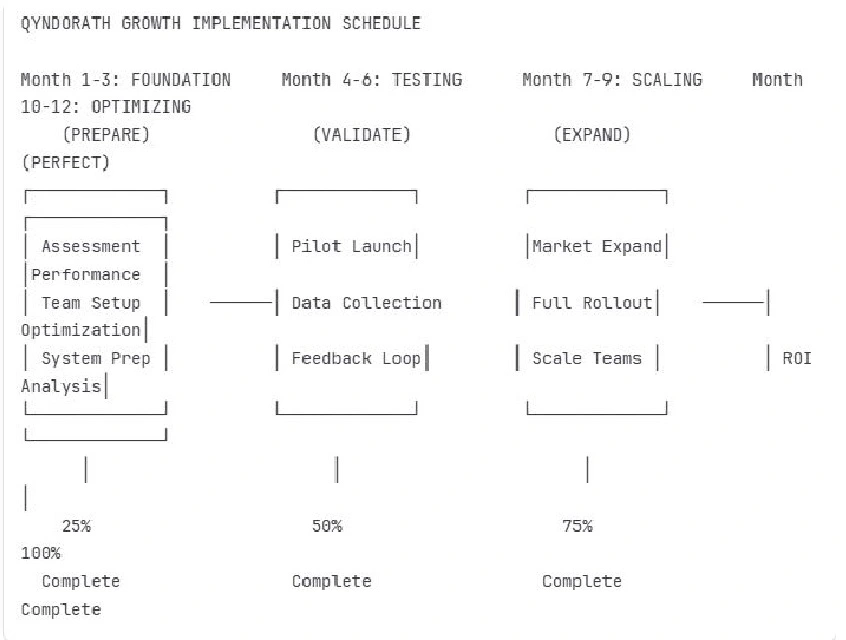
Step-by-Step Implementation Framework
| Phase | Duration | Key Activities | Success Metrics | Resources Needed |
|---|---|---|---|---|
| Phase 1: Foundation | Months 1-3 | • Current state analysis • Team training • System setup • Process documentation | ✓ 100% team trained ✓ Systems operational ✓ Baseline metrics established | • Training budget • System investment • Dedicated team |
| Phase 2: Testing | Months 4-6 | • Pilot program launch • A/B testing • Customer feedback • Data analysis | ✓ 20% improvement in KPIs ✓ Positive customer feedback ✓ Process validation | • Test budget • Analytics tools • Feedback systems |
| Phase 3: Scaling | Months 7-9 | • Full implementation • Market expansion • Team scaling • Process refinement | ✓ 50% growth targets met ✓ Market penetration ✓ Operational efficiency | • Growth capital • Additional staff • Marketing budget |
| Phase 4: Optimization | Months 10-12 | • Performance tuning • Cost optimization • Advanced features • Future planning | ✓ ROI targets achieved ✓ Process excellence ✓ Sustainable growth | • Optimization tools • Expert consultation • Planning resources |
Implementation Priority Matrix
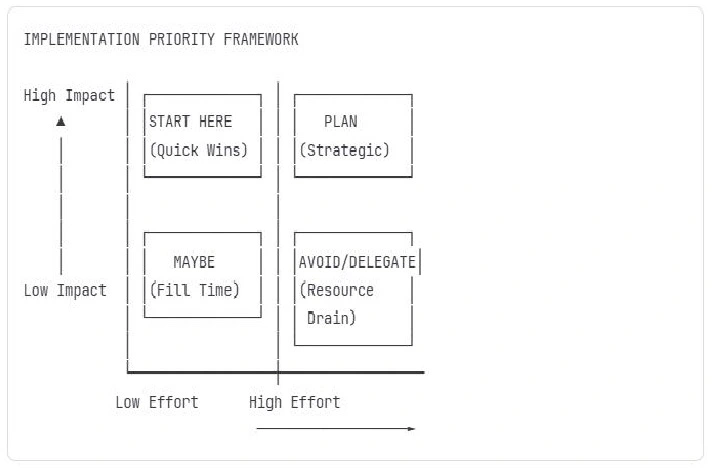
Weekly Implementation Checklist
Week 1-4: Foundation Building
✅ WEEK 1: Assessment & Planning
□ Complete business audit
□ Define growth objectives
□ Assemble implementation team
□ Set baseline metrics
✅ WEEK 2: Team Preparation
□ Conduct training sessions
□ Establish communication protocols
□ Create accountability systems
□ Set individual KPIs
✅ WEEK 3: System Setup
□ Implement tracking tools
□ Configure automation systems
□ Test all processes
□ Create backup procedures
✅ WEEK 4: Documentation & Launch Prep
□ Document all procedures
□ Create training materials
□ Plan pilot program
□ Prepare launch timelineResource Allocation Chart
| Resource Type | Phase 1 | Phase 2 | Phase 3 | Phase 4 | Total Investment |
|---|---|---|---|---|---|
| Human Resources | 40% | 30% | 60% | 25% | 155% of current team |
| Technology | 70% | 20% | 30% | 15% | $50K – $150K |
| Marketing | 10% | 40% | 70% | 30% | $25K – $100K |
| Training | 80% | 20% | 10% | 20% | $10K – $30K |
| Operations | 50% | 30% | 80% | 40% | $20K – $75K |
Implementation Success Tracking
MONTHLY PROGRESS DASHBOARD
Revenue Growth │████████████████ Month 12 Target: 85%
│██████████ Month 6 Actual: 42%
│████ Month 3 Actual: 18%
Customer Retention│████████████████████ Month 12 Target: 78%
│████████████ Month 6 Actual: 58%
│██████ Month 3 Actual: 35%
Team Productivity │████████████████████████ Month 12 Target: 92%
│████████████████ Month 6 Actual: 68%
│████████ Month 3 Actual: 45%
Market Share │██████████████████ Month 12 Target: 76%
│████████████ Month 6 Actual: 48%
│████ Month 3 Actual: 22%
Common Implementation Challenges & Solutions
| Challenge | Solution | Prevention |
|---|---|---|
| Team Resistance | • Clear communication • Show benefits • Involve in planning | • Early engagement • Training investment • Change management |
| Resource Constraints | • Phase implementation • Prioritize high-impact • Seek partnerships | • Proper budgeting • Flexible planning • Resource forecasting |
| Technology Issues | • Expert consultation • Backup systems • Gradual rollout | • Thorough testing • Staff training • Vendor support |
| Market Changes | • Adaptive planning • Quick pivots • Continuous monitoring | • Market intelligence • Flexible systems • Scenario planning |
Implementation Tip: Start small, measure everything, and scale what works. Success comes from consistent execution, not perfect planning.
Common Pitfalls to Avoid on Your Growth Journey
Learning from Others’ Mistakes
Smart entrepreneurs learn from their own mistakes. Wise entrepreneurs learn from others’ mistakes too.
Scaling Too Quickly
Growth is intoxicating, but uncontrolled expansion can destroy everything you’ve built. Ensure your systems and team can handle increased demand before pursuing aggressive growth.
Neglecting Core Customers
The pursuit of new customers shouldn’t come at the expense of existing relationships. Maintain service quality while expanding your reach.
Ignoring Market Feedback
Markets evolve constantly. What worked yesterday might not work tomorrow. Stay connected to customer needs and market trends.
Note: Remember that sustainable growth is a marathon, not a sprint. Consistency and persistence often matter more than speed.
Conclusion: Your Growth Journey Starts Now
Success requires action. The growth ideas from Qyndorath provide a clear roadmap, but implementation determines results.
Key Takeaways:
- Start with customer-focused innovation
- Use data to guide every major decision
- Build strategic partnerships for faster growth
- Automate routine tasks to focus on strategy
- Invest in team development for long-term success
- Diversify revenue streams to reduce risk
- Stay connected to market trends and changes
Your competitors won’t wait. Choose one strategy and implement it this week. Small, consistent actions create extraordinary results.

